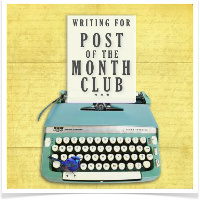One last post about our weekend in Maastricht! I couldn’t move on without mentioning our visit to the Bonnefanten Museum, a contemporary art museum near the up-and-coming Wyck area of town. We were lucky that admission was free that day!
This distinctive bullet-shaped building, designed by Italian architect Aldo Rossi, stands out in contrast to the medieval architecture of Maastricht. It makes the Bonnefanten Museum hard to miss along the banks of the Meuse (or in Dutch, Maas) river.
When you step inside, abundant natural light and a three-story airwell welcome you, together with a regal, winged marble pillar—the Birth of Venus by sculptor Luciano Fabro.
Entering the main building, a monumental staircase shows the way. As a mother with a stroller, I’ve effectively kissed my monumental staircase climbing career goodbye. Fortunately, the Bonnefanten Museum has ample, roomy lifts—way better than the newly renovated Rijksmuseum, which I personally see as a curse for anyone on wheels.
The Bonnefanten Museum’s permanent collection houses early Italian, Flemish and Dutch paintings, as well as medieval sculpture, together with contemporary art. An innovative art lease program allows one to rent works from its collection from as low as €5 a month for six months. So first world!
What I found most interesting was the temporary exhibit that was on at the time of our visit. The Big Change: Revolution in Russian Painting, 1895-1917 features contemporary art from the period leading up to the Russian revolution and the downfall of the Tsars in 1917.
Elsewhere in Europe at around this time, the Impressionists were shaking up the art world. So I expected to see a lot of Impressionist paintings. But instead I found a pleasant surprise.
I’ve never really seen Russian contemporary art before, and I have to say I loved these paintings. So vivid and intense, moody and mysterious.
One of my favorite pieces was a painting by Pavel Filonov called German war, in reference to the First World War. This is just a partial detail, but this complex work gave me goosebumps. To me, it was the mud of the trenches, broken bodies of soldiers, jarring explosions, glimpses of sky amidst the ashes, fragments of half-remembered faces from home, all captured in one immense canvas.
At the end of the exhibit, this installation by Marta Volkova and Slava Shevelenko recreated a Russian dacha, or a traditional countryside summer cottage.
In this dacha landscape, surrounded by the scent of pine wood and trinkets from home, the artists share how four paintings from the pre-revolutionary period changed their lives. It’s a beautiful, vivid way to share a personal story: by setting it in a little piece of Russia itself.
The Big Change exhibit closed on the 11th of August. I feel lucky to have caught it before it ended!
















